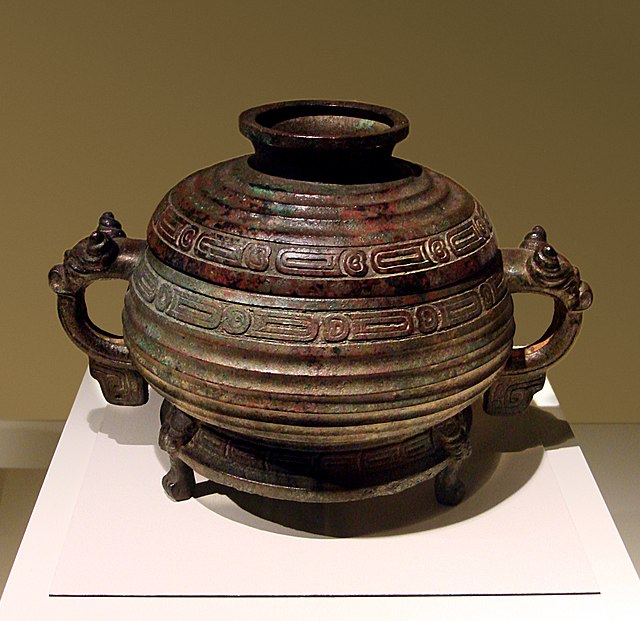The Eastern Zhou is a period in Chinese history comprising the latter half of the Zhou dynasty from c. 771 BCE to 256 BCE, following the Zhou capital's relocation eastward to Chengzhou, near present-day Luoyang. The Eastern Zhou was characterised by the weakened authority of the Zhou royal house, it is subdivided into two parts: the Spring and Autumn period, during which the ancient aristocracy still held power in a large number of separate polities, and the Warring States period, which saw the consolidation of territory and escalation of interstate warfare and administrative sophistication.
The Eastern Zhou period
Gold sword hilt, Eastern Zhou, 6-5th century BCE. British Museum.
The Taerpo horserider, a Qin terracotta figurine from a tomb in the Taerpo cemetery near Xianyang in Shaanxi, 4th-3rd century BCE. This is the earliest known representation of a cavalryman in China. The outfit is of Central Asian style, probably Scythian, and the rider with his large nose appears to be a foreigner. King Zheng of Qin (246–221 BCE) is known to have employed steppe cavalry men in his army, as seen in his terracotta army.
The Zhou dynasty was a royal dynasty of China that existed for 789 years from c. 1046 BC until 256 BC, the longest such reign in Chinese history. During the Western Zhou period, the royal house, surnamed Ji, had military control over ancient China. Even as Zhou suzerainty became increasingly ceremonial over the following Eastern Zhou period (771–256 BC), the political system created by the Zhou royal house survived in some form for several additional centuries. A date of 1046 BC for the Zhou's establishment is supported by the Xia–Shang–Zhou Chronology Project and David Pankenier, but David Nivison and Edward L. Shaughnessy date the establishment to 1045 BC.
States of the Western Zhou dynasty
Western Zhou bronze pot (896 BC), Fufeng County, Shaanxi – Baoji Zhouyuan Museum
A Western Zhou ceremonial bronze of cooking-vessel form inscribed to record that the King of Zhou gave a fiefdom to Shi You, ordering that he inherit the title as well as the land and people living there
Silk painting depicting a man riding a dragon, painting on silk, dated to 5th–3rd century BC, from Zidanku Tomb no. 1 in Changsha, Hunan







